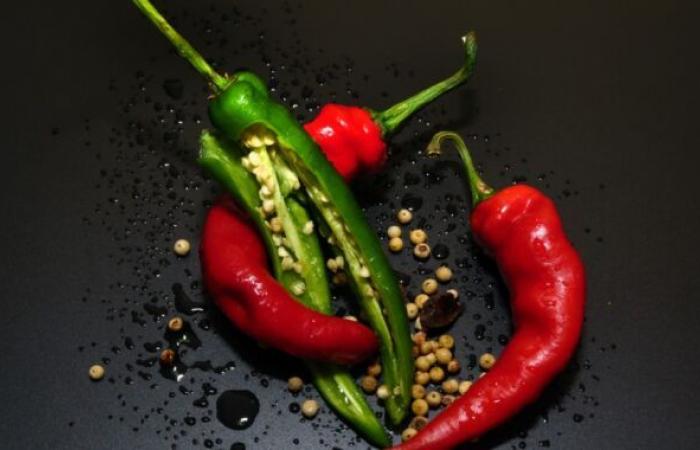Capsaicin is the compound responsible for how hot a variety of chili peppers will be. The higher the capsaicin level, the hotter the pepper. There are several ways to quantify how much capsaicin is in a pepper – its “spiciness” – but they are either too time consuming, too costly, or require specialized instruments, which makes them less than ideal for widespread use.
Now a team of scientists from Prince of Songkla University in Thailand has developed a simple, wearable sensor device that can be connected to a smartphone to show how much capsaicin is in a given chilli pepper sample. This emerges from a new article in the journal ACS Applied Nanomaterials. Bonus: The device has a bizarre shape like a glowing chili.
An American pharmacist named Wilbur Scoville invented his Scoville scale of the same name as early as 1912 to assess the relative spiciness of chili peppers. This testing procedure involves dissolving an exact amount of dried pepper in alcohol to extract the capsaicinoids. The capsaicinoids are then diluted in sugar water. A group of five trained tasters then try several samples with decreasing concentrations of capsaicinoids until at least three of them can no longer sense the heat in a particular sample. The spiciness of the pepper is then rated by its Scoville Thermal Units (SHU).
So hot right now
For example, the Scottish bonnet and habanero range from 100,000 to 350,000 SHU; Jalapeños fall in the 3,500-10,000 SHU range; and the humble pepper drops out at 0 SHU. Nowadays there are also a number of so-called “super hots” with heat values over 1 million SHU, such as the Ghost Pepper (Bhut Jolokia) at 1.58 million SHU and the Naga Viper at 1.4 million SHU. In fact, there is fierce competition among chilli growers in the US, UK, and Australia over who can grow the hottest chilli pepper. The hottest SHU rating to date is a U.S. strain called Pepper X with a whopping 3.18 million SHU, although this has not been independently confirmed by Guinness World Records.
Here’s one possible reason for the record breaking heat from superhots. In a 2015 study using fluorescence microscopy, it was found that super-hot varieties typically store as much capsaicin in the skin as it does in the pulp, unlike traditional chili peppers, which have capsaicin stored primarily in the pulp. While seasoned cooks know that removing the pulp and seeds while preparing peppers also dissipates a lot of their own heat, it doesn’t work with super hot varieties. It’s also why seasoned chefs can handle superhots while wearing gloves and eye protection. A single seed can burn the skin.
The Scoville scaling method has one obvious drawback: it is quite subjective, so it lends itself to inaccuracies. In fact, it has been estimated that results from different laboratories can vary by up to 50 percent. For example, different people have different numbers of mouthwarm receptors and the palate can quickly become desensitized to capsaicinoids. This means that tasting several samples in a row can lead to sensory fatigue. In the last few years the focus has shifted to alternative methods such as high-performance liquid chromatography, gas chromatography, colorimetry or spectrophotometry.
These were the details of the news Better than the Scoville scale? Chili-shaped device can evaluate pepper... for this day. We hope that we have succeeded by giving you the full details and information. To follow all our news, you can subscribe to the alerts system or to one of our different systems to provide you with all that is new.
It is also worth noting that the original news has been published and is available at de24.news and the editorial team at AlKhaleej Today has confirmed it and it has been modified, and it may have been completely transferred or quoted from it and you can read and follow this news from its main source.

